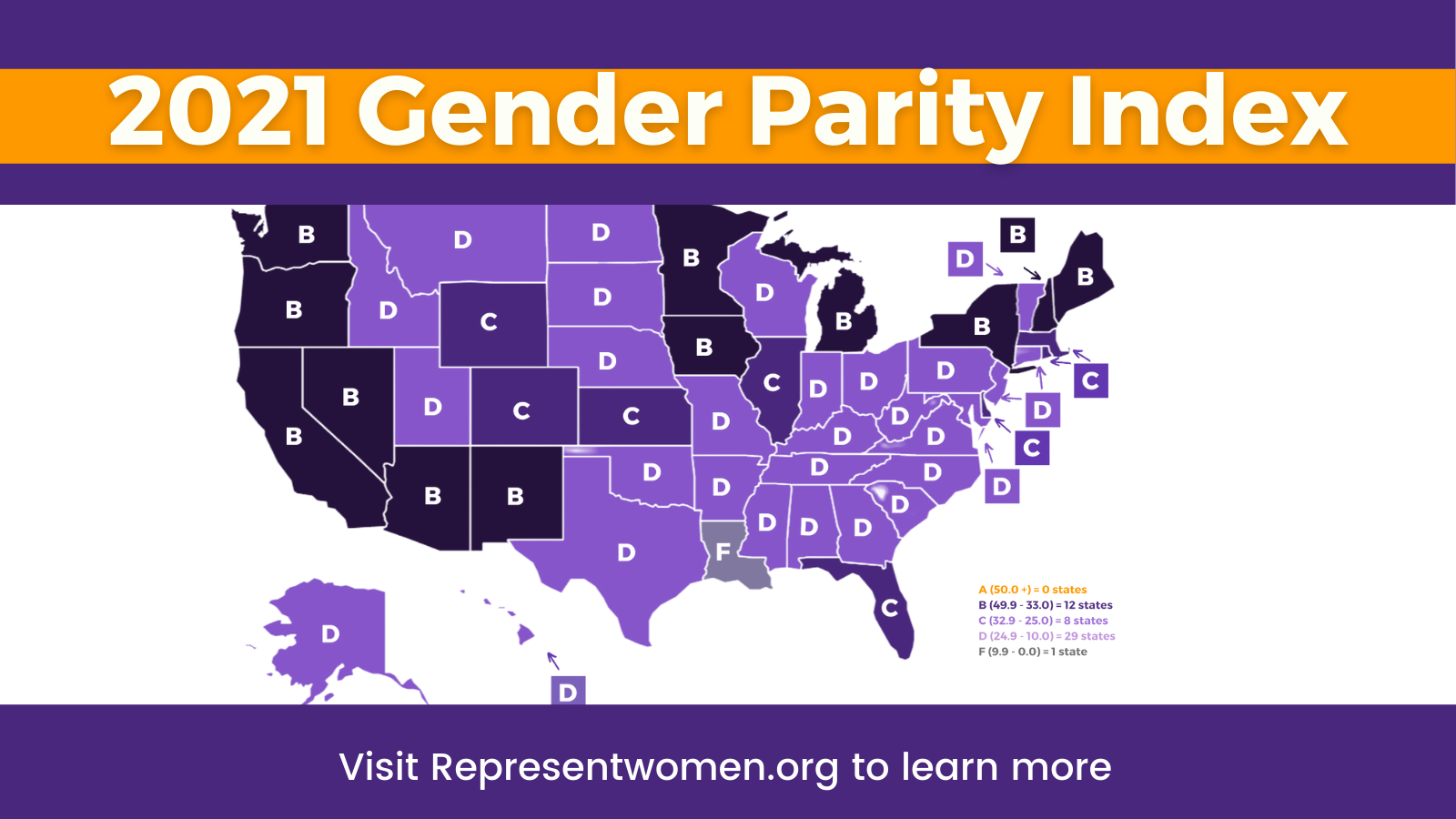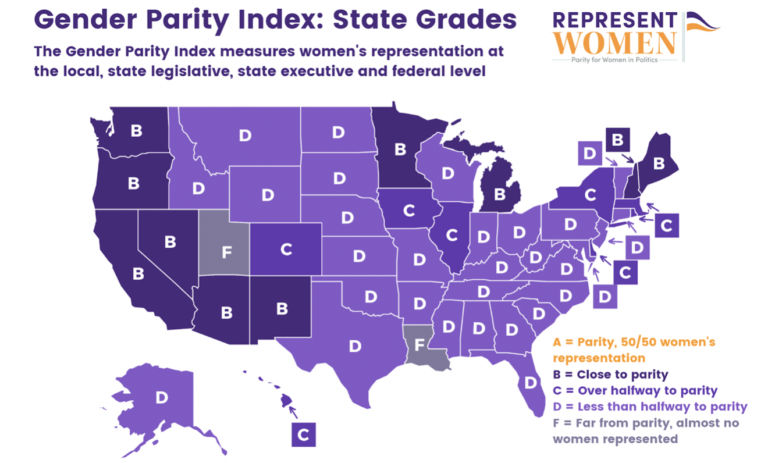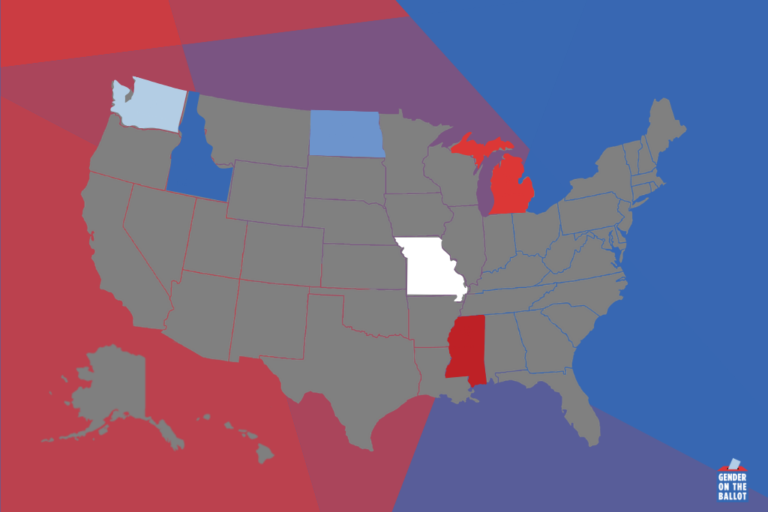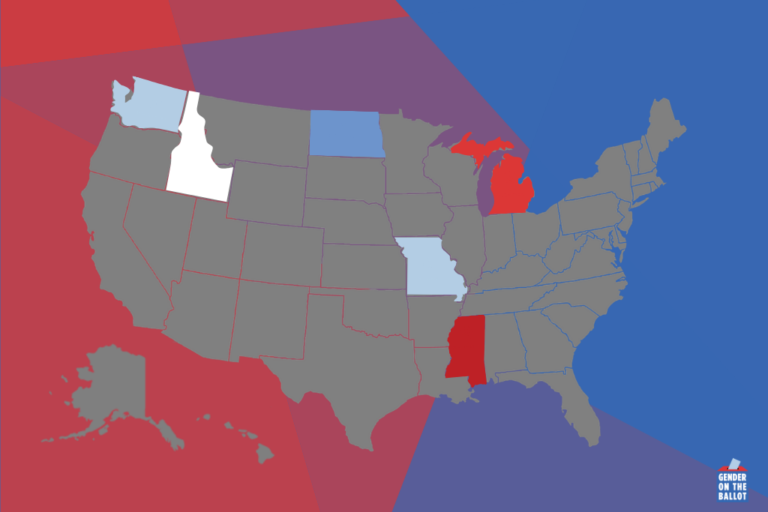For many, the 2018 elections and the election of the 116th Congress felt like…
The 2021 Gender Parity Index: Another Year, Another lackluster GPA for women’s representation.

We’ve seen significant changes in the make-up of our country’s leadership this year. We have our first woman and woman of color vice president and another record-breaking year for women in Congress (now 26.4% women). We also have the first-ever all-female White House Communications team, five women appointed as White House senior staff, and an unprecedented 12 women appointed to Cabinet positions. But does federal and executive-level “record-breaking” translate to gender parity in states and local offices? No. It does not.
According to the 2021 Gender Parity Index from RepresentWomen, there are some compelling new strides toward parity in some states. Yet, the average state’s score for this year’s GPI remained a “D” grade.
For those new to the annual GPI, each state in the U.S. earns a gender parity score, measured on a scale of zero to 100, with zero representing no women in elected office and 100 representing women holding every elected office. States are given letter grades according to the number of points they receive. A score of 50 indicates parity, so any score of 50 or above earns an “A” for that state. As you can see on the map above, no state achieved parity in 2021.
An Average “D” grade is emblematic of a more significant, ongoing philosophical issue in our politics: our incremental change is not moving the needle toward gender balance fast enough. A natural progression toward gender parity is expected, but structural systems changes are in order if we want to reach balance in our lifetime.
On the bright side, New Mexico, potentially our “most improved player,” started with a “D” in 2014 and is now ranked first for women’s representation with a score of 48.9 and a “B” grade. Montana also showed significant progress going from one of our bottom-ranked states last year to a “D” ranked state this year. Montana almost doubled its score due to its new Lieutenant Governor and Secretary of State being women. 2021 also sees twelve “B” states, setting a new record.
On the other hand, nearly half of our states (22 states) did not even reach a score of 20. For the sixth year in a row, Louisiana scored an “F,” with a parity score of less than ten.
The U.S. lags in global parity rankings, sitting at 71st on the Inter-Parliamentary Union’s September 2021 Gender Parity Ranking. Is this because there aren’t enough qualified female candidates? Or perhaps women aren’t interested in politics?
No, it is our snail-pace progress towards gender balance and built-in structural barriers that keep women, especially BIPOC women and women with disabilities, from success at every political stage: running, winning, serving, and leading.
No matter the interest level and qualifications of women running, these barriers are embedded in our electoral rules, the way districts are designed, and the ways campaigns are financed. They continue to keep women in politics excluded or burned out. The GPI’s arrival reminds us each year that, while “record-breaking” should be celebrated, it does not mean our work is done.







